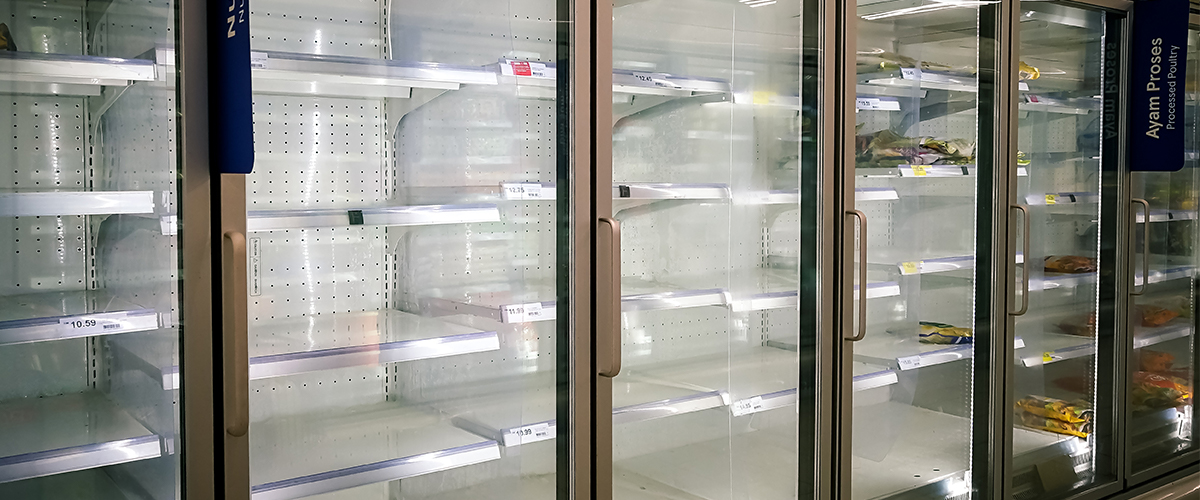The Permaculture Experience
Over the past two decades, North Americans have slowly realized the importance of sustainable gardening. Permaculture or sustainable gardening is a widely accepted way of life in many places outside the USA and is fast gaining recognition in the US. In simple words, and according to the permaculture designers manual, one converts an area of land or garden into a sustainable agricultural farm using natural elements and enclosed farming systems. While the concept is easy, you’ll have to possess some idea about farming to make the vision a reality in practice. However, much data on the subject exists, and the concepts are not hard to master. With permaculture landscaping, one can grow a wide range of crops in cycles, and besides providing food for the family, one can also sell much of it in the local community. Not only is this venture eco-friendly, but it also preserves the local natural ecosystem and prevents waste. Here are some practical tips on making permaculture an excellent business for you.

Should I Take A Permaculture Course?
Taking a course is not required to develop a permaculture garden, but it will surely help. Taking a permaculture class is an excellent idea because of the volume of information necessary to become a successful gardener. There is already a ton of free information on cyberspace comparable to many classes, but nothing compares to face-to-face, hands-on education.
Check Out This Great Resource From My Bug Out Garden
Here is a list of some permaculture education programs
- Oregon State University
- Udemy
- Rooted NW
- Occidental Arts Ecology Center
- San Diego Sustainable Living
- Permaculture Project
- The Permaculture Academy
- Permaculture Education
- Three Sisters

Here are some online horticulture nursery management courses available:
- ACS Distance Education
- UCLA Extention
- Merrit College
- Colorado State
- Illinois Online
- University Of Mass Amhurst
- Stratford Career Institute
- Mt San Antonio College
- Fullerton College
- Las Positas
- Foothill College
Designing The Garden
Design is an essential factor in permaculture gardening. It would help if you understood the amount of sun and shade your land receives; and assessed the slope of the land. The garden itself will need to exist around a water source. Plus, you need to have space to work.
You also need to know where you will plant your crops and how much space they will utilize as they grow. You will want to sketch out all of these ideas so that you can better design your garden. There is an infinite range of design tools that you can access for free and some excellent books to get you going. I started my first garden using the permaculture designers’ handbook, which outlined gardens from very small to whole towns and cities.
How Much Land Does One Need For Successful Permaculture Farming?
Permaculture farming is a philosophy. It lends itself to any sustainable farming practice. People say a diversified garden the size of a door can feed a family with fresh vegetables, but your garden can be any size in reality. If space is tight, you can grow a garden in large pots to supply fresh greens and root crops like potatoes and ginger; the list is very long. Adapt the principles as you grow in size. Researching plant conditions is vital. Planning a well-balanced garden, including companion planting and crop rotation, takes a little effort, but there are plenty of free resources for people willing to give it a go. A commercial garden could start on anything from 1⁄4 acre up but certainly is not dependent on a massive land investment. When you get going, you will learn the value of strata planting incorporating a three-dimensional aspect to production; there are many techniques and, fortunately, much information for you to learn from.
Plant Crops Relevant To Your Zone
You ideally want to plant crops that grow well in your locality. For example, if you live in Wisconsin, it makes no sense to produce citrus fruits. You can plant crops as seeds or buy bare-root samples from a wholesale nursery. The latter will minimize the time to harvest. Some of the annuals that you may consider could include beans, peas, tomatoes, peppers, squash, and others.
Since you will not use insecticides and pesticides, start planting chives, garlic, and onion in empty spaces to prevent disease and digging pests. Also, it would help if you planted colorful flowers to attract pollinators.
Permaculture Farm Business Plans
Here are some business plan services for your garden available online
Some business plan templates that you should consider include:

What Is Permaculture Gardening?
One of permaculture’s critical features is the gradual enrichment of soil with nutrients created in a closed system so that waste becomes new soil. Planting choices symbiotically protect against pests and disease. Permaculture farming draws from many disciplines, including:
- Integrated farming • agroforestry
- Organic farming
- Applied ecology
- Sustainable development
The Guiding Principles For Permaculture Farming
- Treat the earth with care
- Maximize the use of land
- Utilize natural resources when possible • Grow sustainable food
- There can be no waste
- Learn to share
- Treat animals with respect
While permaculture does permit flexibility, the design of the garden is essential. Things you’ll need to consider include sustainability, productivity, and aesthetics. Crop rotation encourages soil health and waste from the garden and kitchen and creates new soil rich in nitrogen and essential minerals. For those who are considering permaculture gardening, it’s best to start small in your backyard. As you get the hang of the philosophy, you can continually expand.
Permaculture Homestead Maintenance
The most labor-intensive element of permaculture gardening is monitoring and maintenance. You must develop a watering system, remove dead plants and weeds, and check for insects and pests. Your plants may attract wildlife, but this is part of the permaculture lifestyle.
Once your plants are ripe, it is time to harvest. After the harvest, you must remove all the weeds and start again.
Increase Diversity Of Plants
Plants help each other to grow and fight disease. So by increasing biodiversity, you will grow healthy plants. A popular combination of plants includes beans, corn, cucumbers, carrots, onions, garlic, and squash, but you will find the list is many and varied.
Soil Preservation And Protection
- Use ground cover crops (peas and beans) or mulch to protect the soil underneath.
- Do not dig everything up because this disturbs the soil ecosystem and microbes.
- Do not walk on the soil, as it causes compaction and prevents air and water from getting to the roots.
- Regularly compost your soil by layering.
Is Composting Necessary?
Composting is essential to the process of making abundant healthy soil. After your first season of farming, you will have a ton of plant matter left over. This plant matter is then incorporated into compost. Other sources include daily food scraps, animal waste, and even coffee grounds from your local café. You will be surprised how much material our society produces which you can use to make fresh soil.
There are many composting methods, but in essence, you’ll need large containers where all your waste will be collected and allowed to decay. The only thing you will need to do is stir or aerate it regularly. Creating soil is an art, but it is not difficult. If you have never composted or don’t know anything about composting, it will be necessary to do some research. It is a common misconception that compost can be a bit smelly, but this will not be the case if done correctly. Worms will do the job for you, and your neighbors will never know they’re there and how productive your compost bins are.
Other Options To Enrich Soil
Another method to enrich the soil is adding layers of mulch to an area and then that rich, beautiful soil you made. Over time, this is incorporated into the growing strata containing vital nitrogen and minerals, leaving your grounds friable and healthy year after year. Crop rotation is the art of understanding which plants deposit or deplete which minerals into the soil structure. It sounds complicated, but it isn’t. Once you start researching, the possibilities will reveal themselves, and you’ll be on your way. These concepts apply to all forms of planting: backyards, large farms, planter boxes, and pots.
Use worms and worm juice teas, add beneficial microorganisms supplied by your local, friendly microorganism gardeners, and learn which simple salts and mineral concoctions you can make yourself. For example, I would never grow tomatoes without adding simple Epsom salts, and there is an abundance of soil tea recipes to discover.
Since you aren’t digging much, using worms is another option to deliver nutrients to the soil. You can buy worms from a farm store. They will quickly bury themselves underground. The worms will then feed on any wood, leaves, or mulch and convert them into organic compost.
How Do You Set Up A Permaculture Garden?
- Design is critical. Create systems that complement each other
- You need to decide what type of garden you want. Will it be fruits or veggies, and what kind? Annuals, perennials?
- Where will you establish your garden? Your backyard or do you own land? You will need to develop a reliable water supply.
- Next, you will have to prepare the land for farming, and learn about soil.
- preparation and vitality
- Order your crops or seeds based on the region
- Start planting seeds or baby roots.
- Add compost
- Mix perennials with annuals
- Monitor and remove diseased plants
- Harvest when ripe
Check Out This Great Resource From My BugOut Garden
Funding My Permaculture Project
Here are a few funding options for your garden
Small Business Administration
The Small Business Administration, SBA has a program to fund new startups, and is worth a look.

How Do I Establish Permaculture Farming?
- Understand the basics of soil production through composting methods. Create closed systems of food production. For example, excess vegetable stock feeds livestock whose waste further enriches your compost pile. Always create new soil, nourishing next year’s crop without the need for chemicals.
- Learn the art of companion planting, for which literature is abundant. Organic foods are in high demand. Healthy profits abound while farming sustainably.
- Learn the value of seeds and start collecting your own heirloom seeds. Share what you do not need on your farm or swap for the seed you do not have. That collection of seed stock will be gold one day soon.
- Utilize your land to its full potential ensuring your soil never becomes tired or nutrient-poor. Good soil is the first and best line of defense against pests.
- Both Perennial and annual plants have a place in the system.
- Nature is your constant ally. As you learn more about permaculture, understanding symbiotic planting rotations becomes second nature. A simple rule of thumb, some plants deposit nitrogen into soils, like beans; other plants require much nitrogen and deplete it from the earth like tomatoes. You will have fun learning all about this and will acquire the most valuable of skills as you do
- It is not hard to be continually regenerating soils while remaining chemical-free
- Grow plants that you can consume and ones that will attract beneficial microorganisms from tiny bugs that live in the soil and eat pests like Nematodes to bees that pollinate fruiting vegetables and trees, ladybugs that eat aphids and other pesky pests.
Water Systems
Without water, you cannot have a permaculture garden. It is vital that you lay down a water system before growing any crops. This is where we get down to the nuts and bolts of how your garden will flourish. A watering system can be as simple as a hose on a tap or can involve automation. Automation is not tricky, and components are cheap and readily available. Familiarize yourself with costs, how they work and what you might need. A simple trip to Home Depot and a chat with a friendly salesperson can answer any questions; you are not obligated to install fancy irrigation systems at the outset.
If you reside in an area of regular rainfall, you may want to design cisterns or barrels to capture the water, saving you money on utility bills. Pay attention to drainage and plan your garden accordingly. Some plants love to have wet feet and are great for those soggy spots, while others like to be relatively dry and benefit from a raised bed with good drainage. Not all soils are made the same. Adding drainage like sand to soils benefits herbs and root crops but not other plants. Learning the soil requirements of what you plan to plant, understanding the rotation needs of these, and then designing the system is by far the most challenging part of making this work. Research and learn; millions have been there before.
What Are The Benefits Of Permaculture?
- Reduce waste
- It helps decrease soil, groundwater, and air pollution
- Efficient use of resources
- There is sustainable farming
- Utilization of renewable energy sources
- Longevity
- Avoiding the use of pesticides and fertilizers
- Permaculture farming is diversified and lessens the risks of crop failures
- Preservation of natural plant and animal habitats
- Saves water
- Encourages organic farming
- Utilizes compost as a source of fertilizer
- Results in better social and economic benefits for the community

What Are The Disadvantages Of Permaculture?
- Startup costs can be high.
- Results are long-term based, so you will have to wait at least a year before seeing any yield.
- It is a modern concept that most older farmers do not utilize
- This may result in conflicts with the established local community and its customs
- May permit the proliferation of pests and insects.
- Since profits are not significant, it may slow the local economy
- Many people lack knowledge about permaculture
- It may not be sustainable for large-scale crop production.
Practices Of Sustainable Agriculture – Community Garden
If you do not have a balcony, joining a community garden to share the workload is another option. This method will also allow you to discuss permaculture issues with other gardeners. However, you will need to sign up first because there may be a waiting list for community gardens. Start-up costs for a community garden will vary, but there are many ways to get involved until a plot becomes available. Some of the costs will cover the city maintenance fees, water supply, contractor salaries, and insurance.
Rooftop Permaculture Garden
A relatively new concept for inner cities is rooftop gardening. You may need permission from the landlord or corporate body, but you might also find incentives to do this. Many cities now offer tax relief for individuals who add greenery to the roof. Large planter boxes and pots are usually the way to go in this scenario. Highly diverse companion planting setups can maximize space and deliver surprisingly high returns. Depending on your agreement with your building owner, it is possible to grow a range of fruit trees, berries, and vegetables and even incorporate animals such as fish or chickens. Nothing goes to waste in a rooftop garden, and by layering your plantings, walls, and shade, structures can become viable production spaces in their own right. That wasted brick wall with a simple trellis arrangement could earn you money selling greens to the local restaurant. Drainage and water systems will require some extra thought, but it is not rocket science; it has been done and can be done by you.
Sharing Our Permaculture Garden
If you have no roof, balcony, or backyard, you may want to ask a neighbor or a friend if you can utilize their garden for farming in return for crops. You might be surprised to find out how willing people can be once they realize how well-researched you are and see your eagerness to match that research with effort. All around the world, shared spaces like this have bought people together.
Can I Start A Permaculture Garden In An Apartment?
Yes, many of these techniques lend themselves to restricted space. Many people have started sprout businesses supplying cafes and restaurants from their apartments. Also, we can not exclude the world of hydroponic gardening from the permaculture model. It will take some research to learn how to do this in a chemical-free fashion, but it is not rocket science. Many people are giving it a go and recording their experience in online forums. The important thing about a balcony permaculture garden is that it will provide you with basic knowledge of gardening and understanding plant growth.
What Are The Start-up Costs For Permaculture Farming?
The costs depend on the following factors:
- Size of the garden
- Design of the garden
- Utility- water, especially
- Buying seeds or bare roots • 5. Employee salary
- Farming equipment and tools
- Storage for plants
- Farming software to keep a log of all the crops planted, date, etc
- Shed
- Lights
- Fencing
While this list may seem onerous, the costs are generally minimal. Many spaces come with existing infrastructure, which you can use. Areas for raising seeds and protecting seedlings need not be complex and can usually be put together with waste at hand, like plastic coverings to make small cloches or greenhouses. Similarly, you can procure fencing from many trash sources to get you going. Starting a garden has many variables that can be met anywhere on the cost spectrum. Even if you have to build up poor soils by buying pre-made compost initially, you will find that talking to your local landscape yard will allay many fears about the cost.
Once you get that compost up and running, you will be growing plants for soil creation, attracting beneficial insects and food; you’ll have a magnificent soil creation factory supplying you with everything your plants will need for free.
Desktop Computers
What Equipment Will I Want For Permaculture Gardening?
The equipment requirements will depend upon the size of your garden, but you may need some of the following:
- Wheelbarrow
- Sprinkler and hoses
- Essential farming tools like spade, hoe, shovel, rake, hand trowel, cutlass, forks
- Personal tools like boots, gloves, heavy chore coat, hat, warm soaks
- Truck
- Cleaning supplies- bucket, detergent, brush, rags, mop, broom
- Computer and farm software
- Seeds, bare-roots
- Compost tools
- Crop collection bins and bags
Greenhouse Manufacturers
- Grow Span
- Atlas Greenhouse
- T3 Greenhouses
- GGS Structures
- Gothic Arch Greenhouses
- Agri Expo
- Agra Tech
- Stuppy
- Nexus
Hydroponic Equipment Suppliers
Conclusion
Permaculture farming is an approach to garden farming that represents a significant shift in lifestyle and mindset. Permaculture is not a one-shot deal- it involves a complete change in how one thinks about agriculture.
The design of the garden is vital in small segments at a time. Before planting, understand the sun and shade requirements of your plants and plant accordingly.
- Do not forget that water supply is critical.
- Grow crops according to your zone and utilize all the space
- Start preparing the land in winter so you can plant in spring.
- Use a stacked plant design- meaning plant larger trees first followed by smaller plant and lastly ground covers.
- Join forces with others to get the best out of your permaculture
And most of all, have fun, be creative, let nature lead the way, and make some money.










